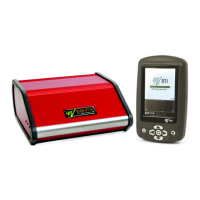1. Introduction
About this Manual
Barracuda & QABrowser Reference Manual
2012-10/4.3A
6
1 Introduction
About this Manual1.1
This manual is divided into a few main parts.
1. A general description of the Barracuda.
2. A general description of the QABrowser.
3. Some theoretical background and basic principles.
4. Descriptions on performing measurements with the system for different
modalities.
5. Description of different accessories for the Barracuda.
6. Troubleshooting tips, an FAQ, and a glossary.
Users who use the Barracuda with only a PC and oRTIgo are recommended to read at
least the following topics:
· Introduction
· Description of the Barracuda
· Measurements with the Barracuda System
This manual gives a short introduction to handheld computers and enough of
information to get started and use it with the Barracuda. However, it is advised (if you
are going to use a handheld computer) to study the manual that is included with your
handheld computer to get familiar with its capabilities.
Pictures in included manuals for detectors and probes may include an ADI module (a
small module with a connector attached to the detector cable). ADI modules are used
to store calibration data and used by other products than the Barracuda from RTI
Electronics. For the Barracudasystem, calibration data is instead stored inside the
system. See section Managing Detector Calibrations for more information.
The handheld computer is sometimes called "Palm" or "Palm computer" in this manual,
this is referring to all types of handheld computers running Palm OS or Windows
Mobile that currently are possible to use with the Barracuda and the QABrowser.
Typographical Rules
Terms in bold face are references to texts on screenshots, like buttons and texts, and
menu items. Other terms are italicized.
Introduction to the Barracuda1.2
Congratulations to your purchase of a Barracuda. You have now in your hand the most
powerful tool for X-ray analysis. It has been carefully designed to meet the needs of
both standard QA applications as well as advanced service/repair/calibration of
modern X-ray systems, while still being very simple and intuitive to use. It can measure
all the required parameters such as kVp, exposure time, dose, dose/pulse, dose rate,
tube current, mAs, waveforms, and much more. One single detector, the unique
multi-purpose detector (MPD) can be used for radiography, mammography,
fluoroscopy, pulsed fluoroscopy, cine, dental, dental panoramic, and CT (not CT dose).
48

